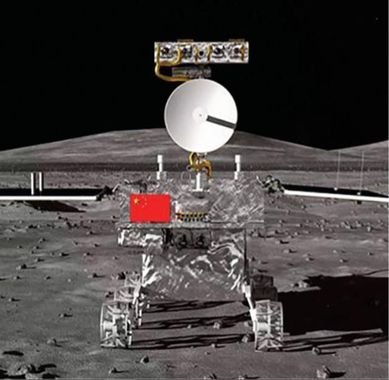For the first time, a spaceship lands at the far side of the Moon and with a rover robot for exploration.
Source: CGTN
China’s Chang’e-4 probe successfully landed on the far side of the Moon at 10:26 a.m. BJT Thursday. This is the first ever soft-landing on this previously uncharted area.
The name Chang’e comes from the Moon goddess in Chinese mythology, which lived in the Moon.

But the probe sent back the world’s first close picture of the Moon’s far side via the relay satellite Queqiao (Magpie Bridge) which is operating in the halo orbit around the second Lagrangian (L2) point of the Earth-Moon system.
The langrangian points will be subject to another post. This is the photo of landing site in South direction.

The Queqiao satellite was launched in May last year by Long March 4C rocket. This figure shows the L2 Lagrangian orbit.

This satellite receives information from spaceship and rover in X-band and retransmits to Earth in S-band. Also resends telecommands from Earth.

The Chang’e-4 – which includes a lander and a rover – is now expected to study the mineral composition and shallow lunar surface structure of the Moon’s far side, as well as perform low-frequency radio astronomical observation.
The exact landing area is called Aitken Basin’s Von Karman crater, and it is about 24,000 kilometers across and 13 kilometers deep. Chinese scientists believe the spacecraft’s landing on this huge crater would enable them to collect some new information about the Moon’s mantle, which is the name for the layer below the surface.


